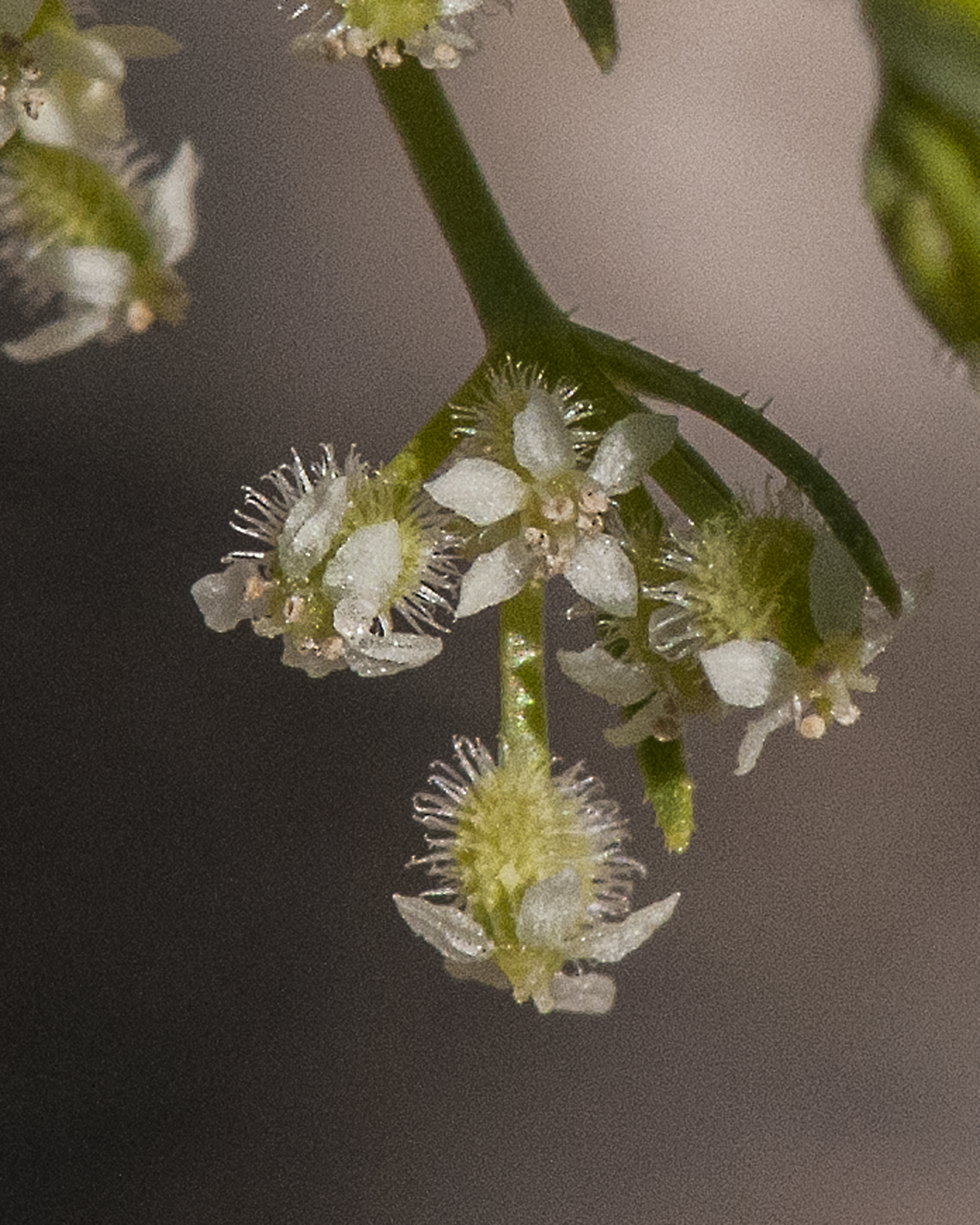
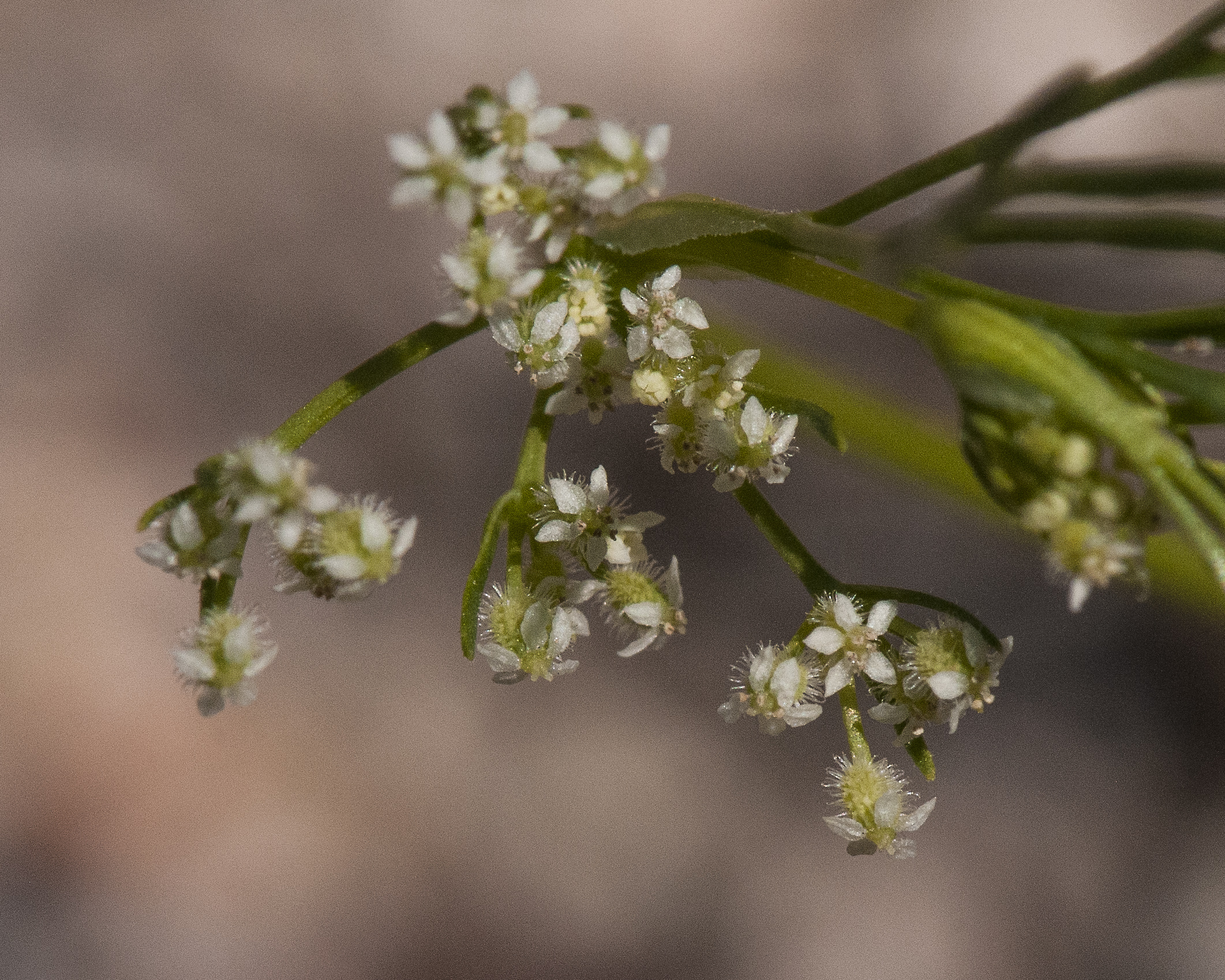 Sabino Canyon 2/23/16
Sabino Canyon 2/23/16
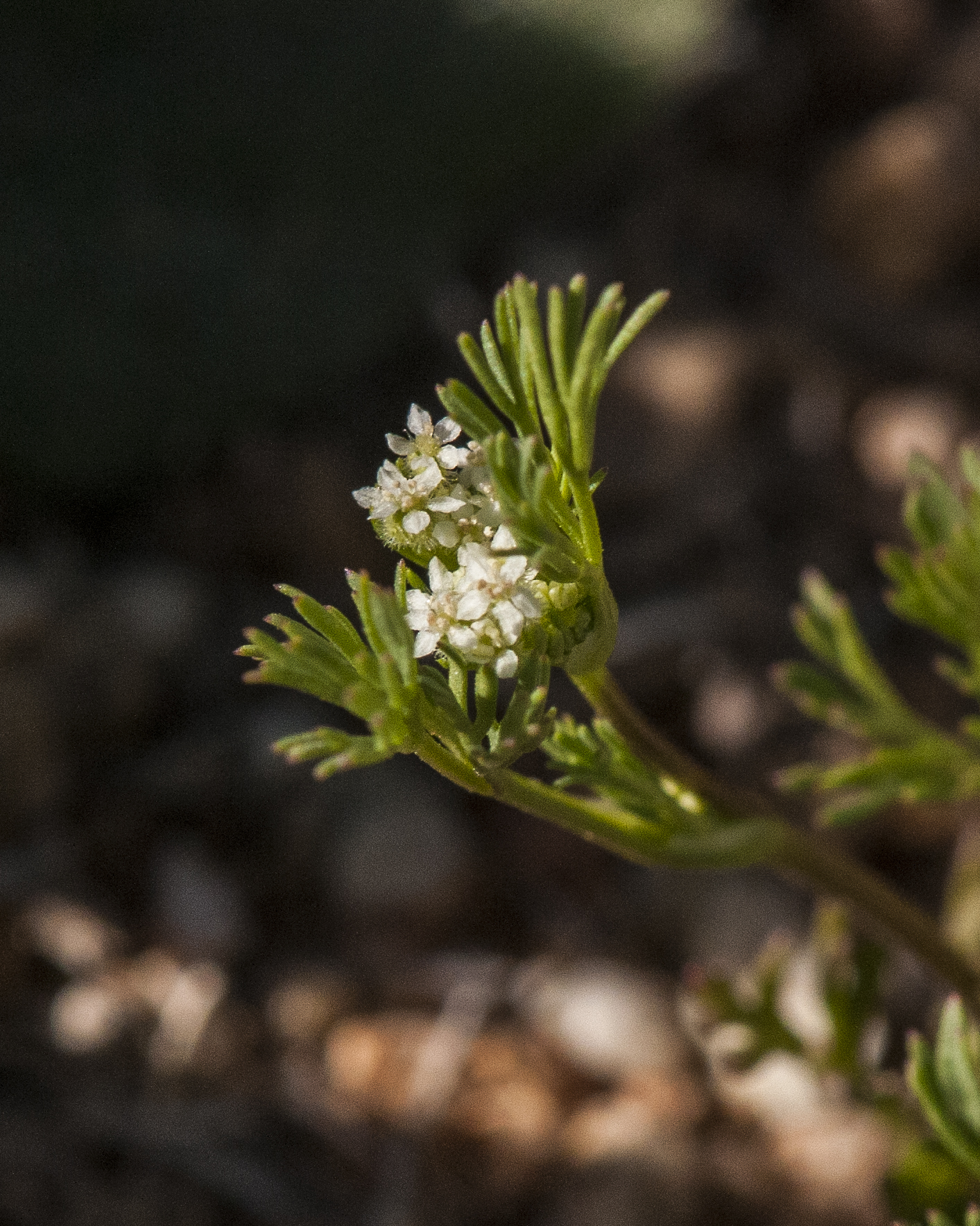 Sabino Canyon 3/2/16
Sabino Canyon 3/2/16
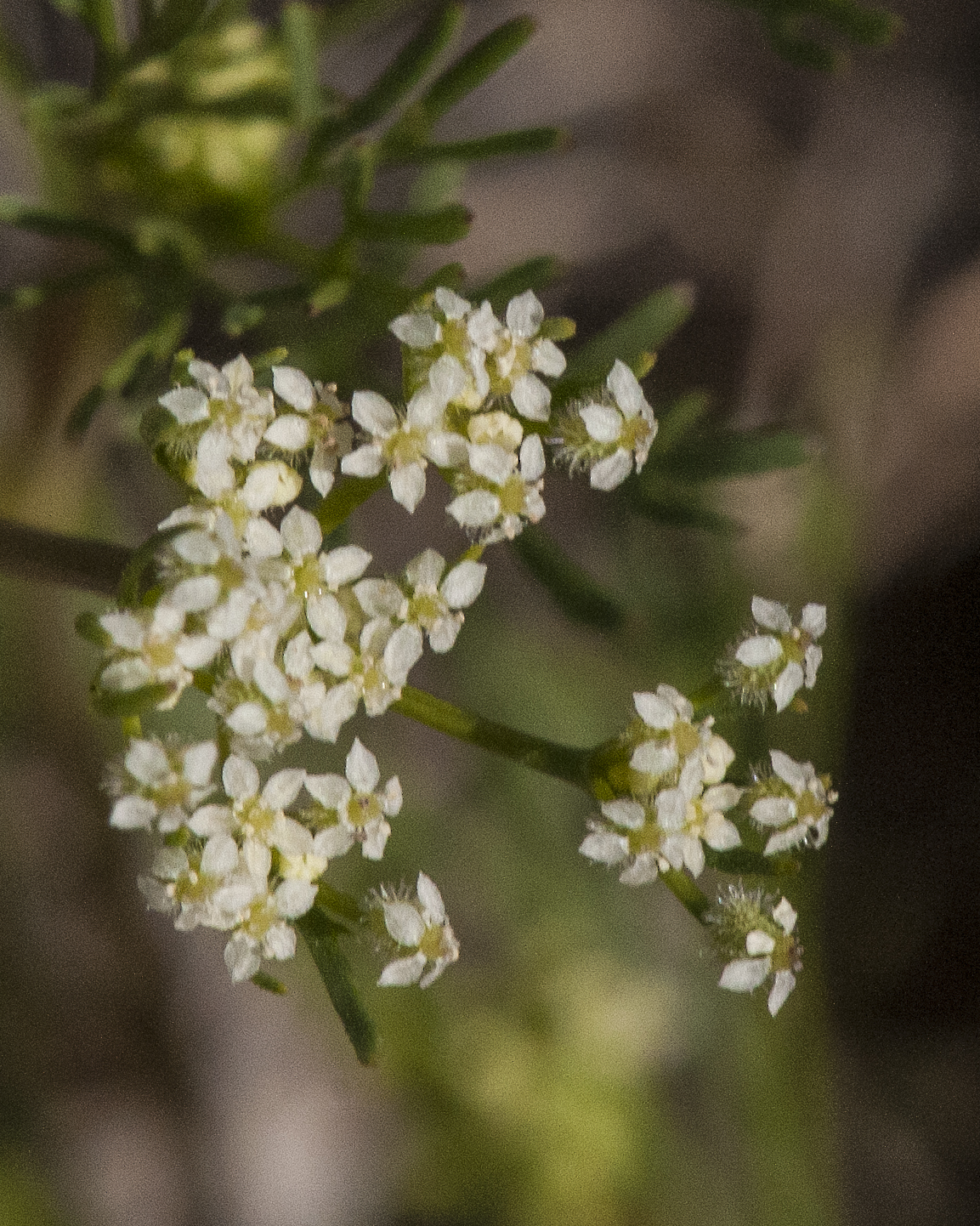
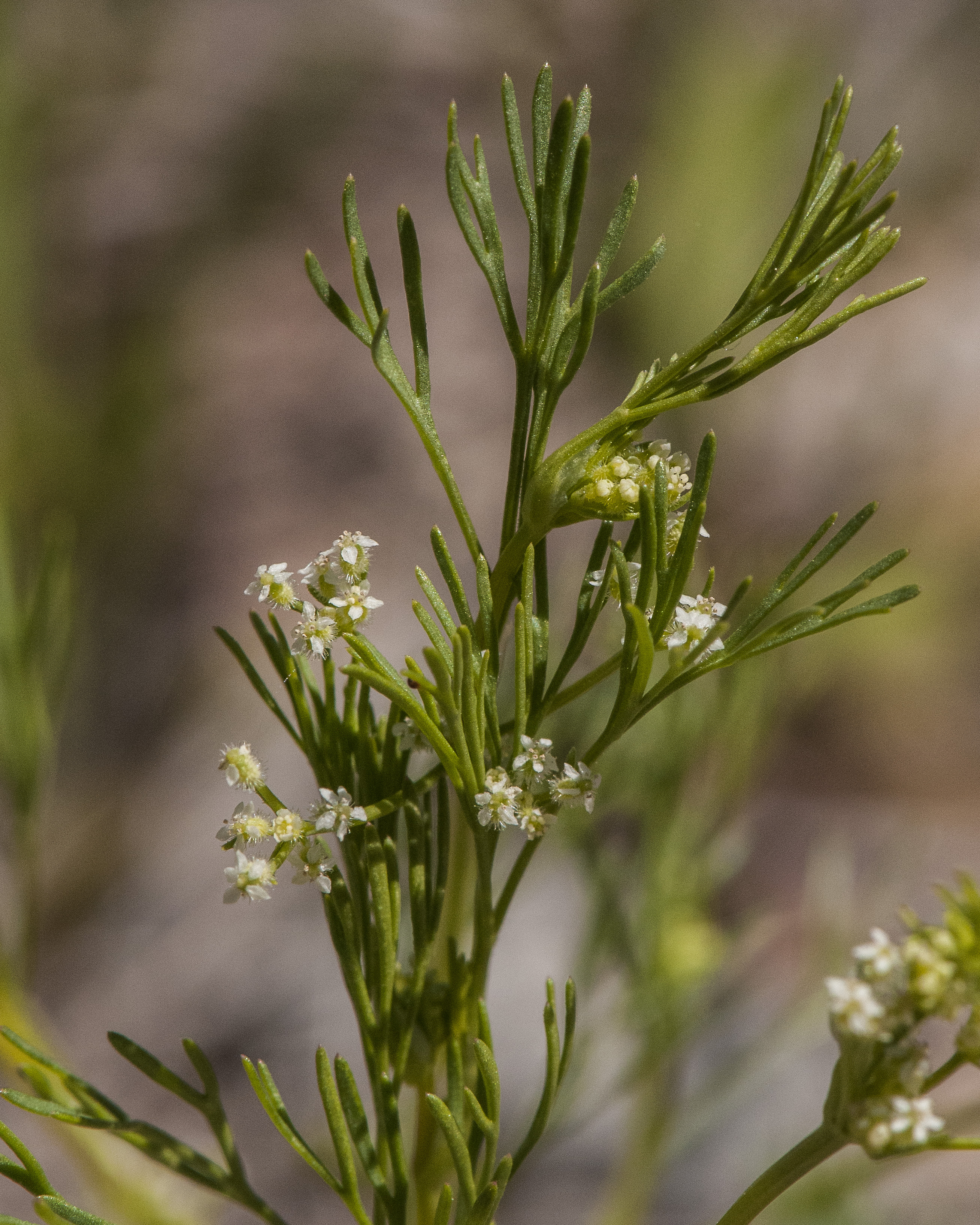
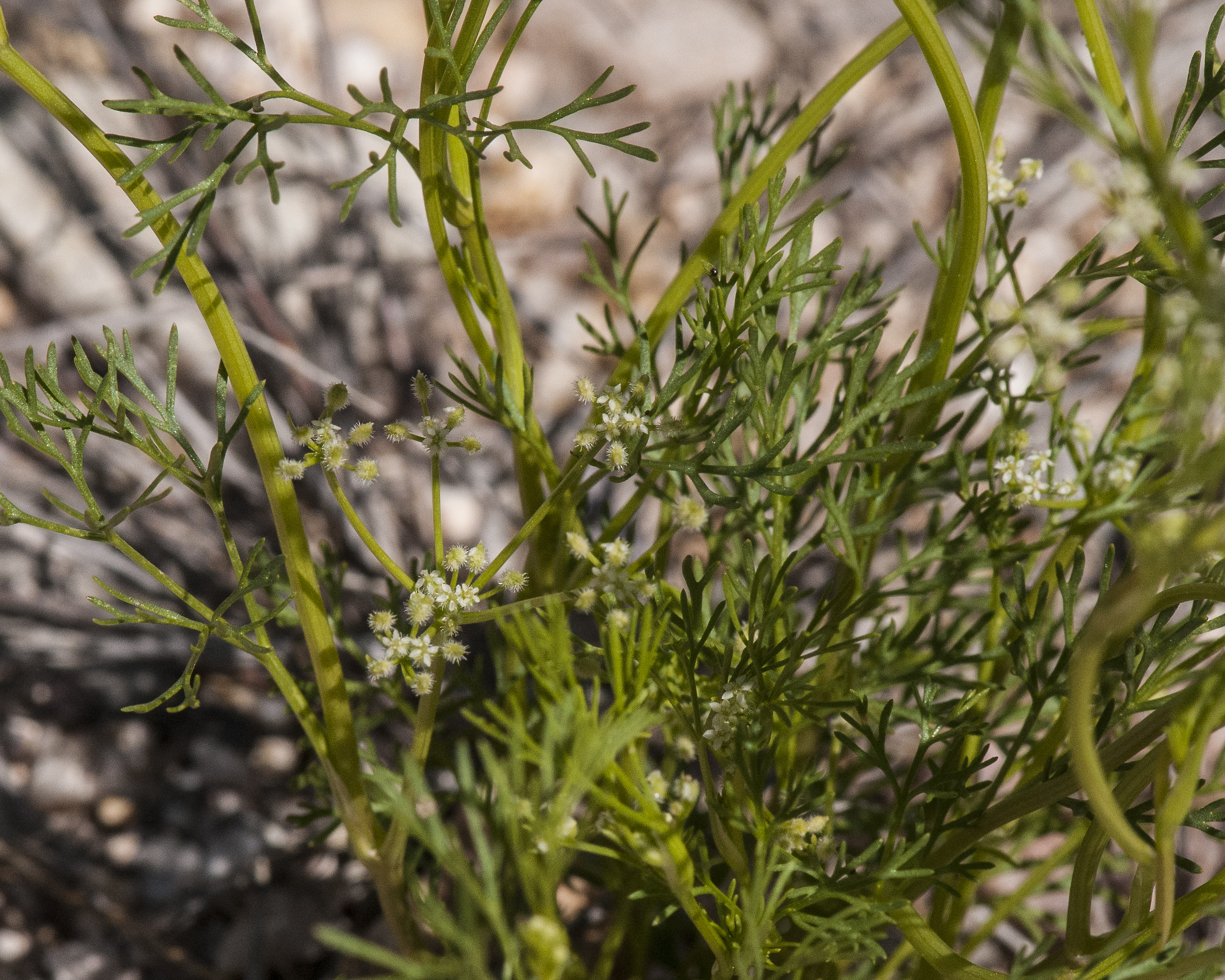
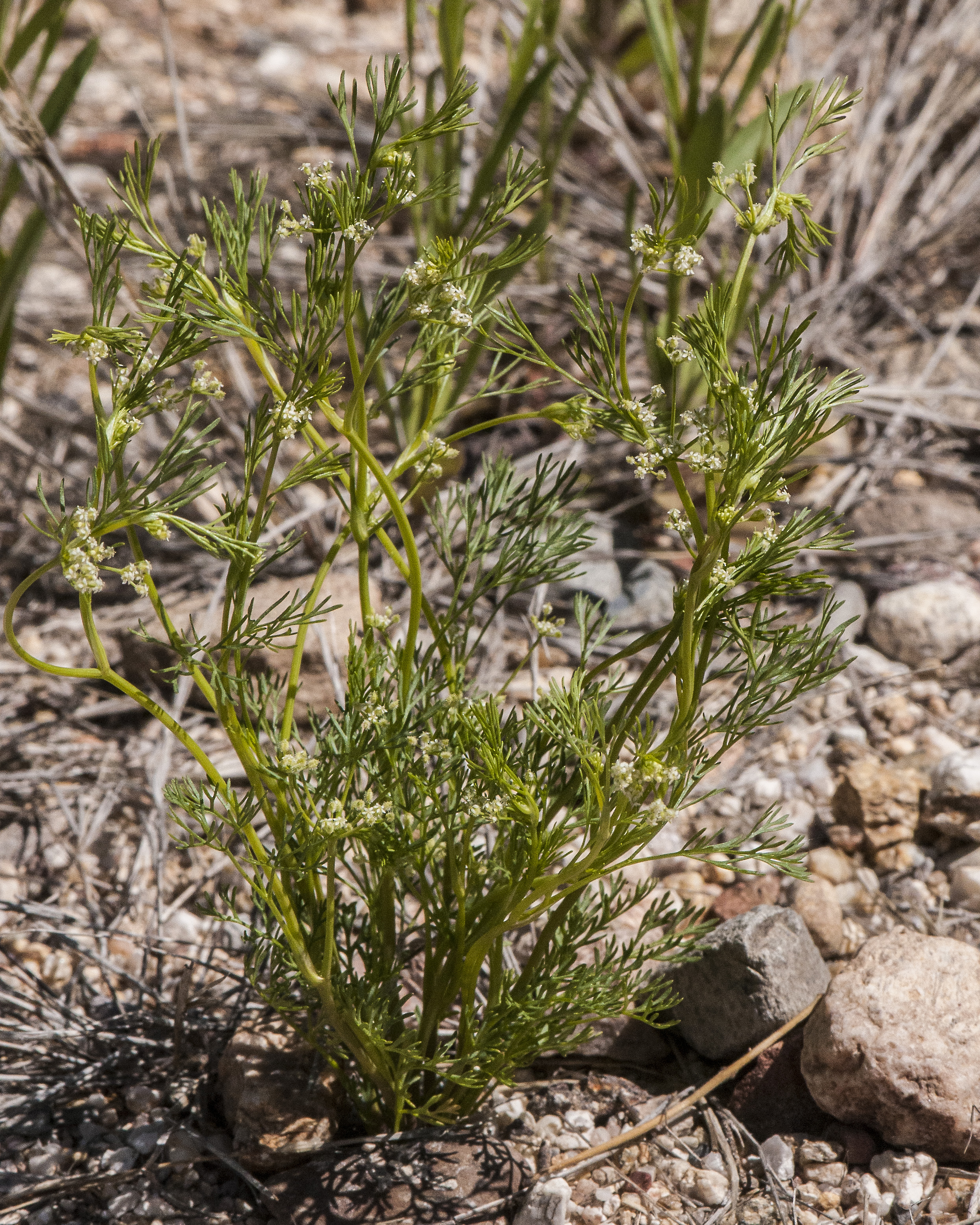 Sabino Canyon 2/23/16
Sabino Canyon 2/23/16
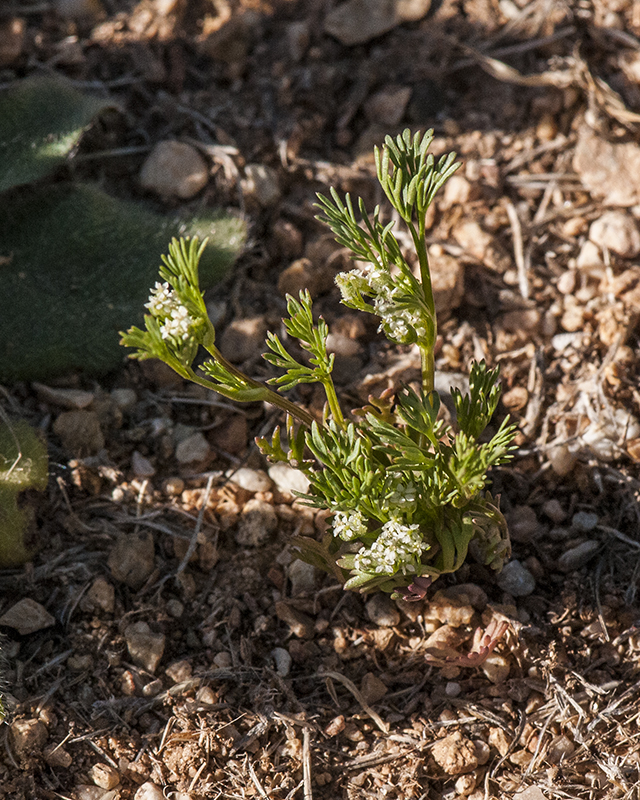
Wildflowers of Southern Arizona
Bristly Scaleseed.
Spermolepis laterifolia.
Parsley (Apiaceae) family.
Duration: Annual. Nativity: Native. Lifeform: Forb/Herb. General: Low, spreading annual herb from a taproot; stems alternately branching, glabrous, 5-40 cm. Leaves: Alternate, cauline, ternately decompound (divided into 3 segments, and then each segment is again divided into 3 segments), blade 7-25 mm wide, ovate in outline; ultimate segments 2-18 mm, thread-like; petiole 3-20 mm. Flowers: White, in axillary and terminal compound umbels, on peduncles 1-5 cm, exceeding the leaves; umbels lacking bracts, secondary umbels with few bractlets, thread-like to linear, entire or toothed; rays 5-14, 1-15 mm, generally ascending, very unequal; flowers on pedicels generally less than 7 mm. Fruits: Capsule splitting into 2 single seeded mericarps, widely ovate, 1.5-2 mm wide, with prominent ribs and short bristles with hooked tips. Ecology: Found on rocky slopes and sandy flats from 1,000-5,000 ft (305-1524 m); flowers February-May. Distribution: Most of southern US, from CA east to NC; south to n MEX. Notes: Identify this white flowered member of the carrot family by its sparse, open, nearly bractless umbels; delicate leaves divided into threadlike segments; and seeds with hooked bristles. Nesom (2012) segregated western individuals (west of Texas) of this species into a new species and is calling them Spermolepis laterifolia. Appears similar to Yabea microcarpa, but that species has larger fruits, >5mm long, and the stems and leaves are pubescent with hispid hairs. Daucus pusillus is also hairy, has fruits with barbed (rather than hooked) bristles, and the umbels usually have long leafy bracts. Ethnobotany: None. At least one species in this genus is reported as poisonous. Etymology: Spermolepis is from Greek sperma, seed and lepis, scale, for scale seeded; echinata means covered with prickles like a hedgehog.
Santa Catalina Mountains.
Sabino Canyon Recreation Area
Location: Just north of restrooms at turnaround near Bear Canyon Tram Stop #2.
3/14/19
Notes: Bear Canyon path 2/23/16, 3/2/16
See SEINet Pictures and Description



 Sabino Canyon 2/23/16
Sabino Canyon 2/23/16
 Sabino Canyon 3/2/16
Sabino Canyon 3/2/16



 Sabino Canyon 2/23/16
Sabino Canyon 2/23/16
